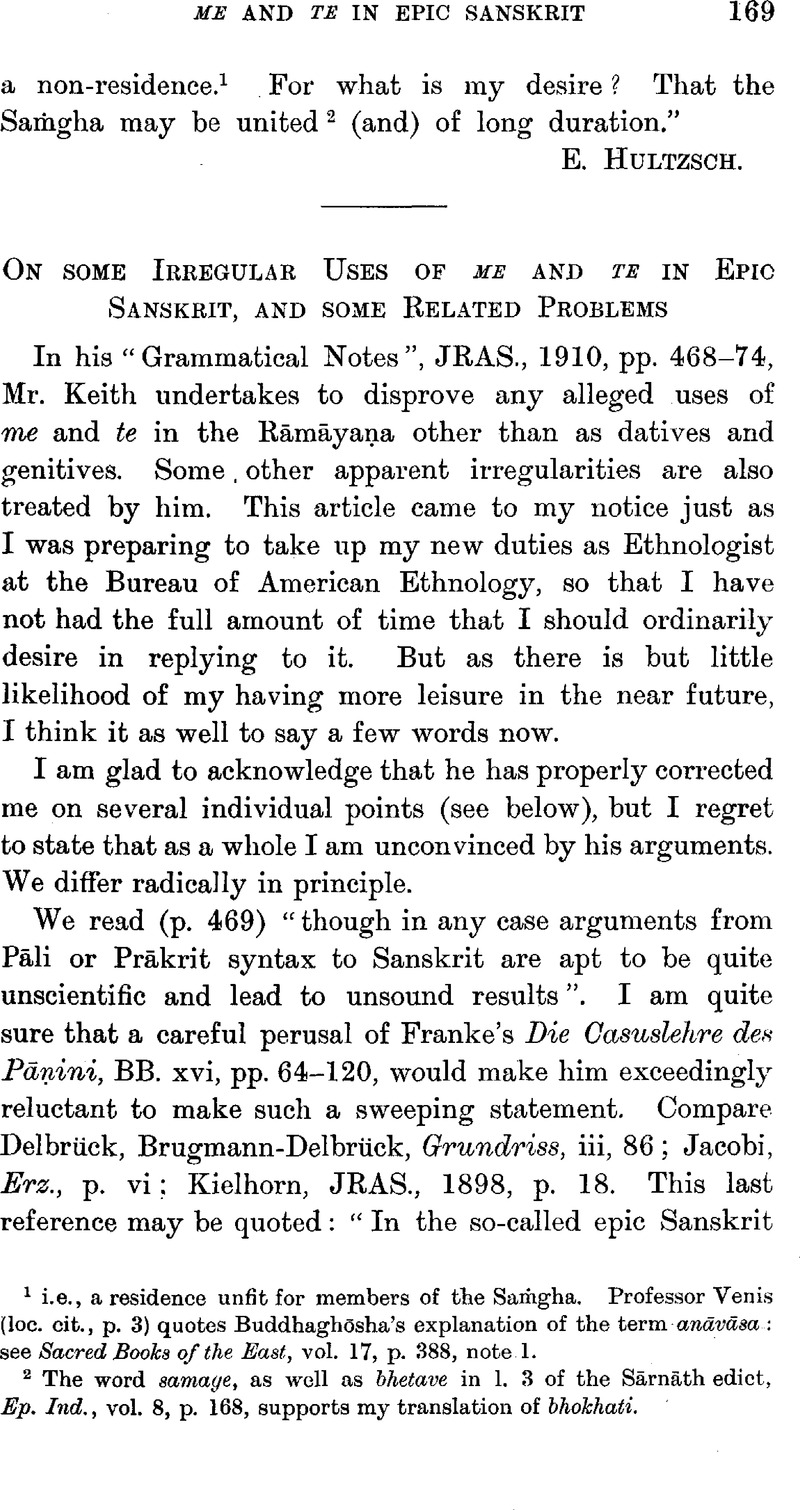No CrossRef data available.
Published online by Cambridge University Press: 15 March 2011

page 172 note 1 For the benefit of those who are not specialists I mention that it is a recognized fact that the Girnār, Shāhbazgarhī, and Mansehra redactions of the Fourteen Edicts are translations from an original composed in a Magadhan dialect, that is, a speech essentially the same as that of the Dhauli, Jaugada, and Kālsī (Edicts i-ix) redactions of the Fourteen Edicts, and that of the various versions of the Seven Pillar Edicts; and that this dialect has left traces in the translations. Such traces are called Māgadhisms, as the dialects of the above-named monuments were Magadhan.
page 174 note 1 The commentary wrongly supplies vṭkalāso (from v. 18).